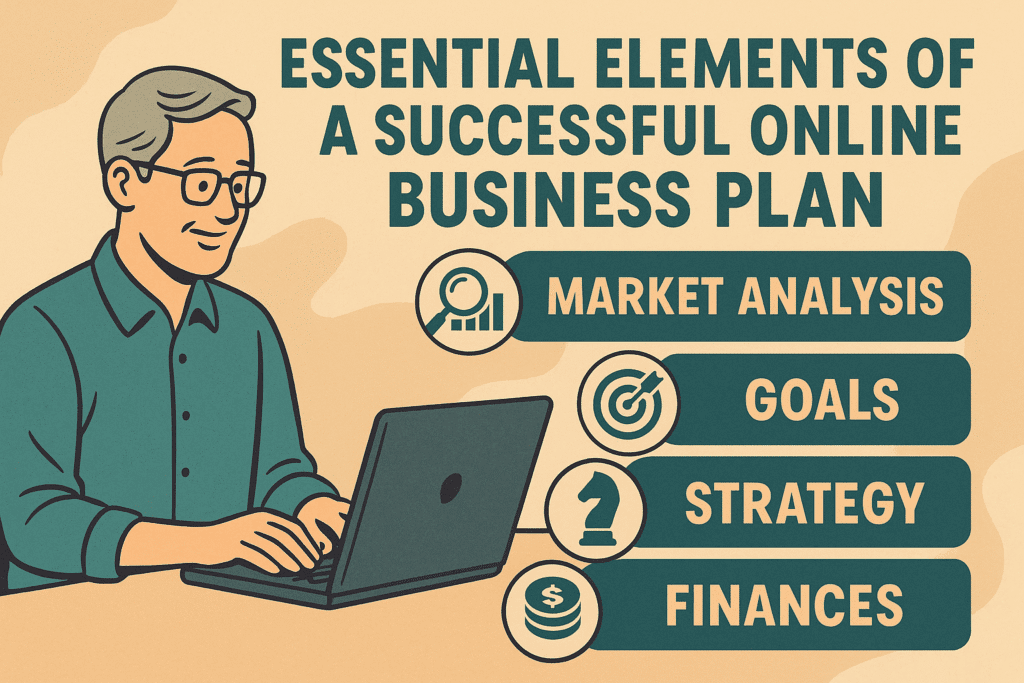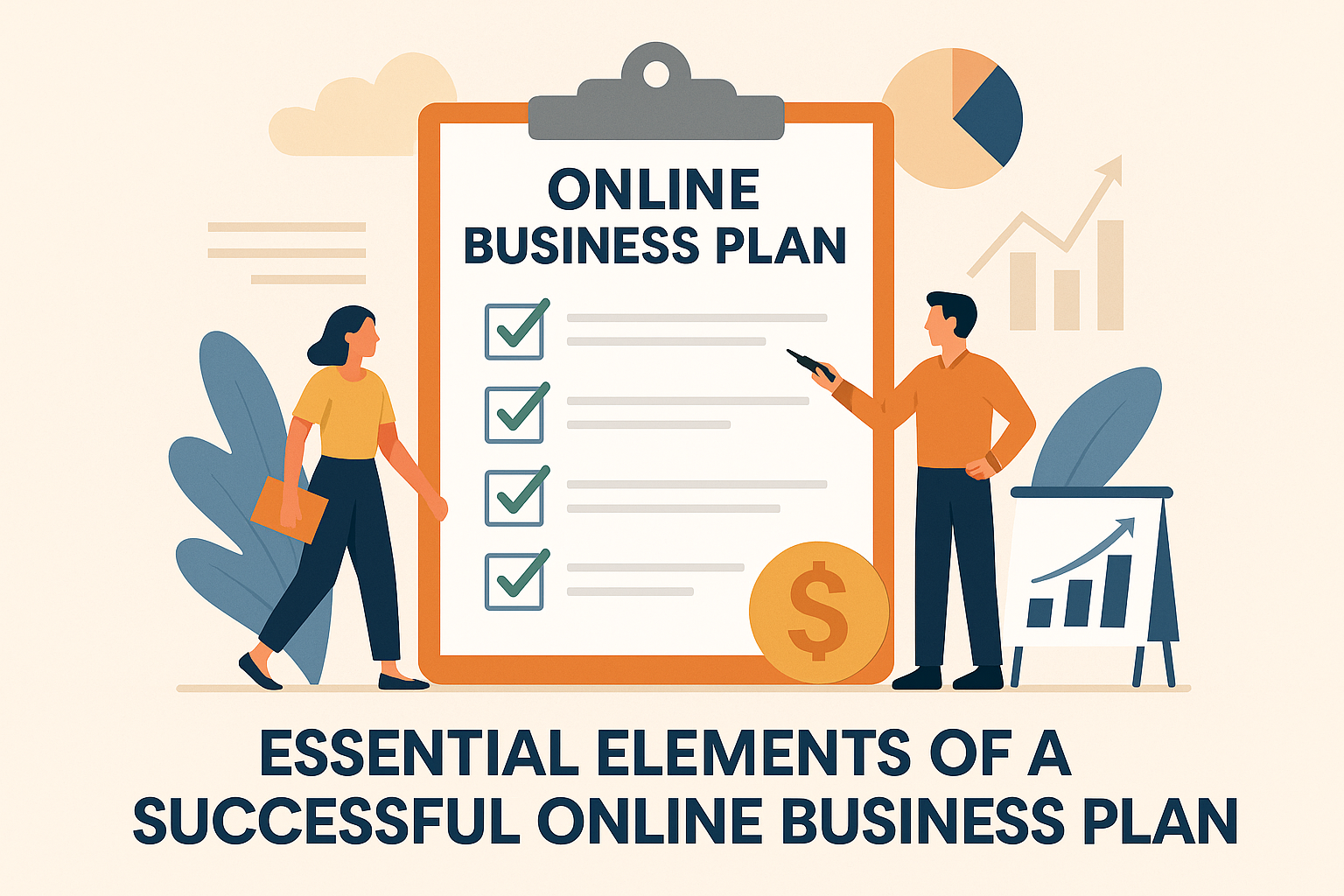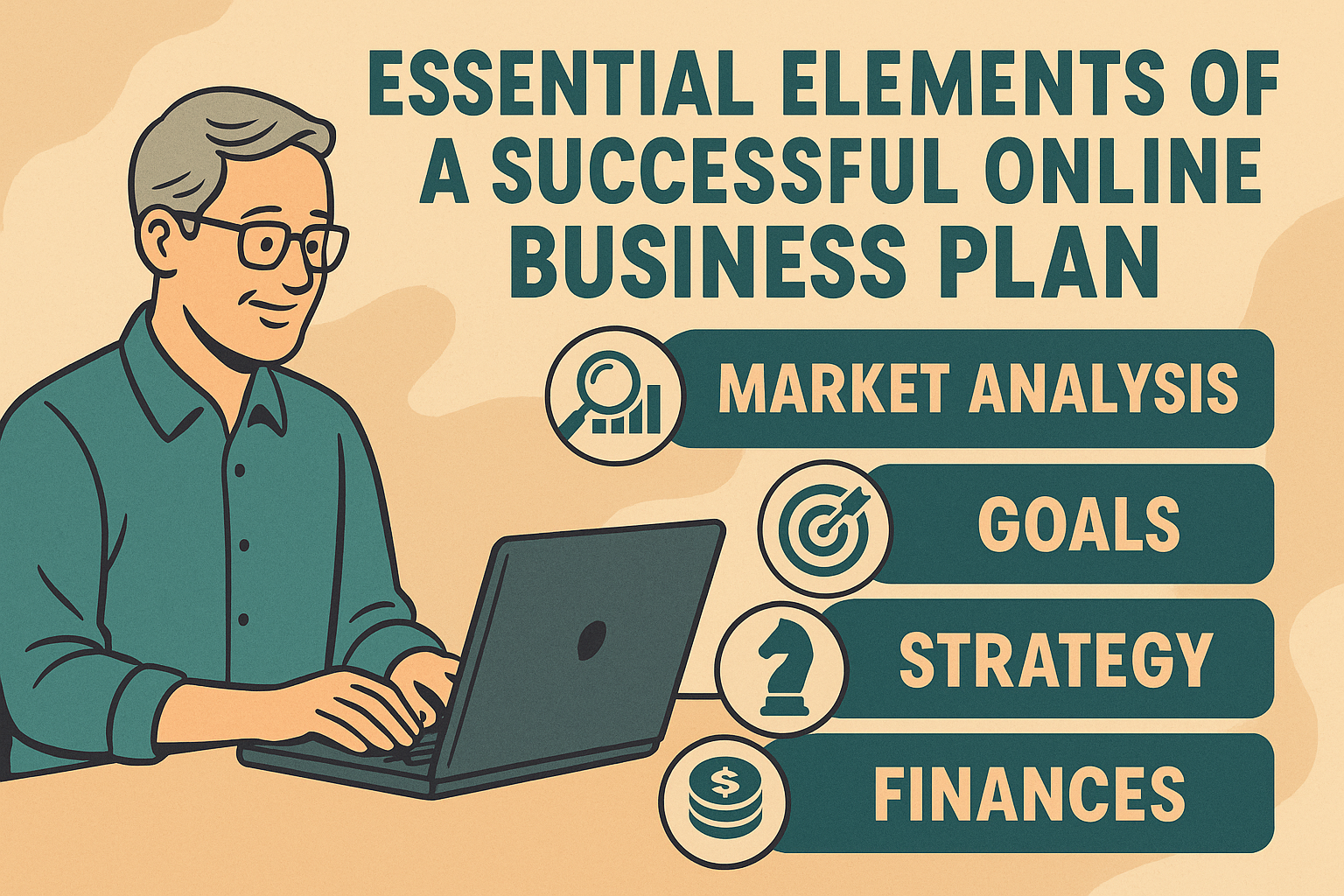
A good online business plan sets the foundation for just about every successful webbased company out there. Whether you’re launching a side hustle or aiming for a longlasting brand, crafting a plan isn’t just busywork. It helps you map out your direction, how you’ll get there, and what you’ll need along the way. I’ve brought together the essential elements that really matter when you’re planning your own online business adventure.
Why an Online Business Plan Really Matters
Having a plan for your online business helps you turn ideas into results. The online world moves fast, and a clear roadmap keeps your goals front and center when trends and technology mix it up. Some stats from the U.S. Bureau of Labor Statistics show that about 20% of new businesses don’t make it past their first year, and online businesses face the same risks. Careful planning makes it easier to steer through challenges, reach customers, and track what’s working (and what isn’t).
Originally, detailed business plans mostly aimed to impress investors. These days, they’re just as useful if you’re a solo founder keeping track of your own progress or mapping out the best route before spending hardearned cash. Laying things out upfront can save you time, stress, and wasted resources.
Main Pillars of a Strong Online Business Plan
Planning a business doesn’t have to be overwhelming, but you should cover a few key sections. Here are the pillars I focus on when sketching out or reviewing a digital business idea:
- Business Overview: Lays out what your business does, who it serves, and why it exists.
- Market Research: Tracks down who your customers are and what’s happening in your niche.
- Products or Services: Spells out what you offer and why people should care.
- Marketing and Sales Strategy: Describes how you’ll get customers and keep them coming back.
- Operations Plan: Walks through the tools, processes, and platforms you’ll use to run your online business.
- Financial Plan: Breaks down costs, revenue goals, and your road to profitability.
Breaking Down Each Element (And Why They Matter)

Business Overview
This section gives readers a quick peek at the heart of your business. It doesn’t need to be a dry company summary. Try to capture what you do in one or two sharp sentences—the classic elevator pitch.
Here’s what I like to include:
- Mission statement (why your business exists)
- Core values or guiding principles
- Key objectives (short-term and longterm goals)
Market Research
Knowing who you’re selling to and what’s happening in your industry is a must. Research who your competition is, what your typical customer looks like, how they behave, and where you might fill a gap.
- Target audience: Age, interests, online habits, and pain points matter a lot.
- Competitive analysis: What similar businesses are out there? What are they doing well? What are they missing?
- Market trends: Are there new technologies, growing demand, or changing habits?
When I started my first web store, reading competitor reviews on Amazon gave me instant insight into what I could do differently with my product lineup. Even small findings here can change your approach.
Products or Services
Here, spell out exactly what you’re offering. List each product or service and talk about the value it brings to your customers. Even if you’re still fine-tuning your ideas, jot them down so you can spot gaps or fresh opportunities later on.
- What’s included and what sets your offer apart (for example, faster shipping, better support, or unique downloads)
- Planned pricing or bundles
- How you’ll deliver (shipping, digital download, subscription access, etc.)
Marketing and Sales Strategy
This part is about how you’ll spread the word, pull in visitors, turn those visitors into paying customers, and build loyalty. For online businesses, getting this right from the start is crucial since your entire audience is, of course, online.
- Brand messaging: Consistent style and voice across blogs, ads, and social posts
- Channels: Social media, SEO, affiliate marketing, email, and paid ads
- Conversion tactics: Landing pages, calltoaction buttons, email funnels, and special offers
When I helped a friend run an online T-shirt shop, posting behindthescenes stories on Instagram brought twice as many sales as our search ads did. Often, small touches—like sharing customer reviews or product tips—make all the difference.
Operations Plan
This part is where you figure out the everyday stuff. Cover everything from your ecommerce platform and order fulfillment to handling refunds and automating tasks with apps. Mapping out your main tools and processes ahead of time helps keep things running smoothly and prevents headaches as you grow.
- Site management: Hosting, backups, content updates
- Order fulfillment: Physical shipping or digital delivery
- Customer support: Email, chatbot, or easytofind FAQs
- Outsourcing or hiring: When you’ll need to bring in help versus handling tasks solo
Financial Plan
Even if you’re not a numbers person, a realistic financial plan can make all the difference. List out your startup costs, monthly expenses, and how you expect to break even (or turn a profit). Make sure to include running costs like web hosting, marketing, software, taxes, and anything else related to keeping your business humming along.
- Startup expenses: Domain, hosting, logo design, product samples
- Monthly costs: Platform fees, subscriptions, marketing, fulfillment
- Revenue projections: Sales targets for three, six, and twelve months
- Funding sources: Personal savings, crowdfunding, or outside investment
Practical Planning Steps to Launch Effectively
- Define your offer and audience: Get specific about who you help and the problems you solve.
- Analyze competitors and market shifts: Don’t skip the research—even just browsing social media or Amazon reviews can help.
- Choose your tools and platform: Shopify, WordPress, Etsy—pick what best matches your business needs.
- Set up basic operations: Set up payment processing, delivery methods, and customer support ahead of launching.
- Go live with a simple marketing push: A few personal emails or social posts kickstarts traffic and builds early momentum.
- Test, measure, and tweak: Tools like Google Analytics or Hotjar let you see how people interact with your site and where improvements are needed.
Every one of these steps gives you valuable data and hands-on experience to help you fine-tune your plan as you go. Don’t be afraid to start small—your version 1.0 will teach you far more than endless planning ever could.
Common Mistakes Worth Avoiding
- Skipping audience research: If you try to sell to “everyone,” you’ll end up connecting with no one.
- Rushing a website launch: Broken checkout pages or missing contact info can quickly turn away buyers.
- Ignoring ongoing expenses: Subscription and marketing costs add up faster than many new owners expect.
- Overlooking customer support: Prompt and friendly responses are more important online than ever before.
I found out the hard way that even one negative customer review (if you ignore it) can slow sales for weeks. Having some email templates or quick replies on hand for support questions makes your customers feel cared for and speeds up your responses.
Useful Tools for Building Your Online Business Plan
There are tons of free and affordable resources out there to help you plan, launch, and improve. Here’s what I find especially effective:
- Google Docs or Notion: Ideal for tracking notes, ideas, and drafts
- Canva: Handy for designing eye-catching graphics and marketing assets
- Shopify’s business plan template: Offers a fillinthegaps outline to speed things up
- SEMrush or Ubersuggest: Great for SEO and keyword research to find your target audience
Frequently Asked Questions
Question: Is a formal business plan necessary for an online business?
Answer: You don’t need a massive plan, but organizing your goals and strategies (even on a single page) will keep your efforts focused. It makes it easier to figure out the basics and stick to a game plan.
Question: How often should I update my business plan?
Answer: Revisit your plan every few months, especially if you stumble upon new trends or your products change direction. It keeps your approach fresh and relevant without starting over from scratch.
Question: What’s the difference between an inperson and an online business plan?
Answer: The foundations are similar, but online plans put much more emphasis on digital marketing, website operations, and remote customer service. Payments, delivery, and branding also work differently online, so make sure to cover those in detail.
Wrapping Up
Putting together an allinone online business plan takes some time, but it pays off big in the long run. You’ll know exactly who your audience is, how you can serve them, and what it takes to keep things running smoothly. Give your plan a boost as you learn, tweak your approach when new opportunities show up, and don’t be afraid to switch things up if needed. Bottom line: a thoughtful plan gives you the best shot at longlasting growth and satisfaction in your online business adventure!

Hey a great post you have here!
Learning about making money online is something with many want to learn about, I mean who doesn’t want to be able to work from the comfort of their own home.
Running a successful business requires a lot of patience as well as dedication. There are also a few elements which need some practicing such as social media marketing along with others.
Thanks again and have a great day!
Hi Sariya,
Thank you so much for your kind words—I’m really glad you enjoyed the post! You’re absolutely right: making money online is a dream many people share, but as you pointed out, it definitely takes patience, dedication, and a willingness to keep learning.
Social media marketing is a great example—it can be powerful, but it takes time to find your voice and build real connections. The good news is, with consistent effort and the right strategy, it gets easier and more effective over time.
Wishing you all the best on your journey—thanks again for stopping by!
Warmly,
Gila
What I have come to discover over the years is you can have a business plan which is the first step in the right direction because a business plan is your map or blue print for you to have and idea that will lead to a clearer understanding of where you are going but a business plan though sound will change along the way because adjustment will be needed in oder words all business plans have to make some reajustements and this only happens as the plan is being worked which is good because these adjustment are eye openers that will lead to success.
Hi Norman,
Thank you for sharing your insights—you’re absolutely right. A business plan is a powerful starting point, but it’s not set in stone. I love how you described it as a map that evolves with the journey. That flexibility and willingness to make adjustments along the way are key to long-term success.
It’s those real-world experiences and “eye openers,” as you put it, that help refine our direction and make our businesses stronger. I really appreciate you adding that perspective to the conversation—great advice for anyone getting started!
Wishing you continued success on your path,
Gila